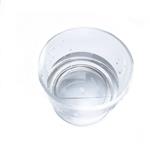- Olibanum oil
-

- $0.00 / 25KG
-
2025-03-21
- CAS:8016-36-2
- Min. Order: 1KG
- Purity: 99%
- Supply Ability: 50000KG/month
- Olibanum oil
-

- $15.00 / 1KG
-
2021-07-13
- CAS:8016-36-2
- Min. Order: 1KG
- Purity: 99%+ HPLC
- Supply Ability: Monthly supply of 1 ton
|
| | Olibanum oil Basic information |
| | Olibanum oil Chemical Properties |
| Boiling point | 140 °C(lit.) | | density | 0.870 g/mL at 25 °C(lit.) | | FEMA | 2816 | OLIBANUM OIL (BOSWELLIA SPP.) | | refractive index | n20/D 1.4780(lit.) | | Fp | 47 °C | | storage temp. | -20°C | | form | buffered aqueous solution | | Odor | at 10.00 % in dipropylene glycol. terpenic incense peppery spicy old wood woody pine resinous | | Odor Type | terpenic | | optical activity | [α]/D 17.0 to 10.0° (neat) | | biological source | mouse | | EPA Substance Registry System | Olibanum oil (8016-36-2) |
| Risk Statements | 10 | | Safety Statements | 16 | | RIDADR | UN 1993 3/PG 3 | | WGK Germany | 3 |
| | Olibanum oil Usage And Synthesis |
| Description | Olibanum is a gum resin secreted by several Boswellia species
that grow extensively from South Arabia to Somaliland. The small
trees or shrubs yield an exudate after incisions are made on the
bark; it consists of a milky liquid that hardens into small, yellowish
droplets commercially known as incense tears. The tears are
sorted; the most valuable quality (white tears) is sold as burning
incense, while the less valuable qualities (powder and fragments)
are used in flavors and perfumes because of their more reasonable
cost. The part used is the gum resin exudate. | | Chemical Properties | Olibanum oil and olibanum resinoid are obtained from frankincense, which
is a gum resin collected from the bark of the tree Boswellia carteri Birdw. or
Boswellia frereana Birdw. (Burseraceae) growing in Arabia and Somalia. The
resinoid is produced by solvent extraction, and steam distillation gives the oil,
which is a pale yellow, slightly viscous liquid with a balsamic odor and a faint
lemon note.
d2525 0.862–0.889; n20D 1.4650–1.4820; α20D ?15 ° to +35 °; solubility: 1 vol in 6 vol
of 90% ethanol, solutions occasionally opalescent; acid number: max. 4.0; ester number: 4–40.
Various qualities are commercially available. Their compositions may vary considerably
because they are prepared from the resins of different Boswellia species.
Main constituents of the oil are monoterpene hydrocarbons.
Olibanumoil and resinoid are used in oriental-type perfumes, the resinoid especially
for its good fixative properties. | | Chemical Properties | The oil, obtained by steam distillation of the trees B. carterii Birdw. and other Boswellia species, has a balsamic,
slightly citrine odor. | | Physical properties | It is a pale-yellow liquid. It is soluble in most fixed oils and with a slight haze in mineral oil. It
is insoluble in propylene glycol and glycerin. | | Uses | frankincense (Boswellia thurifera) is described as anti-inflammatory and a mild antiseptic that brings relief to dry and sensitive skins and helps heal all types of wounds. Its astringent properties are said to help balance oily or overactive skin. This is one of the oldest essential oils in use, and dates back to ancient egypt. | | Uses | olibanum oil is a fragrance component. It is astringent with slight anti-inflammatory properties. | | Definition | Extractives and their physically modified derivatives. Boswellia, Burseraceae. |
| | Olibanum oil Preparation Products And Raw materials |
|